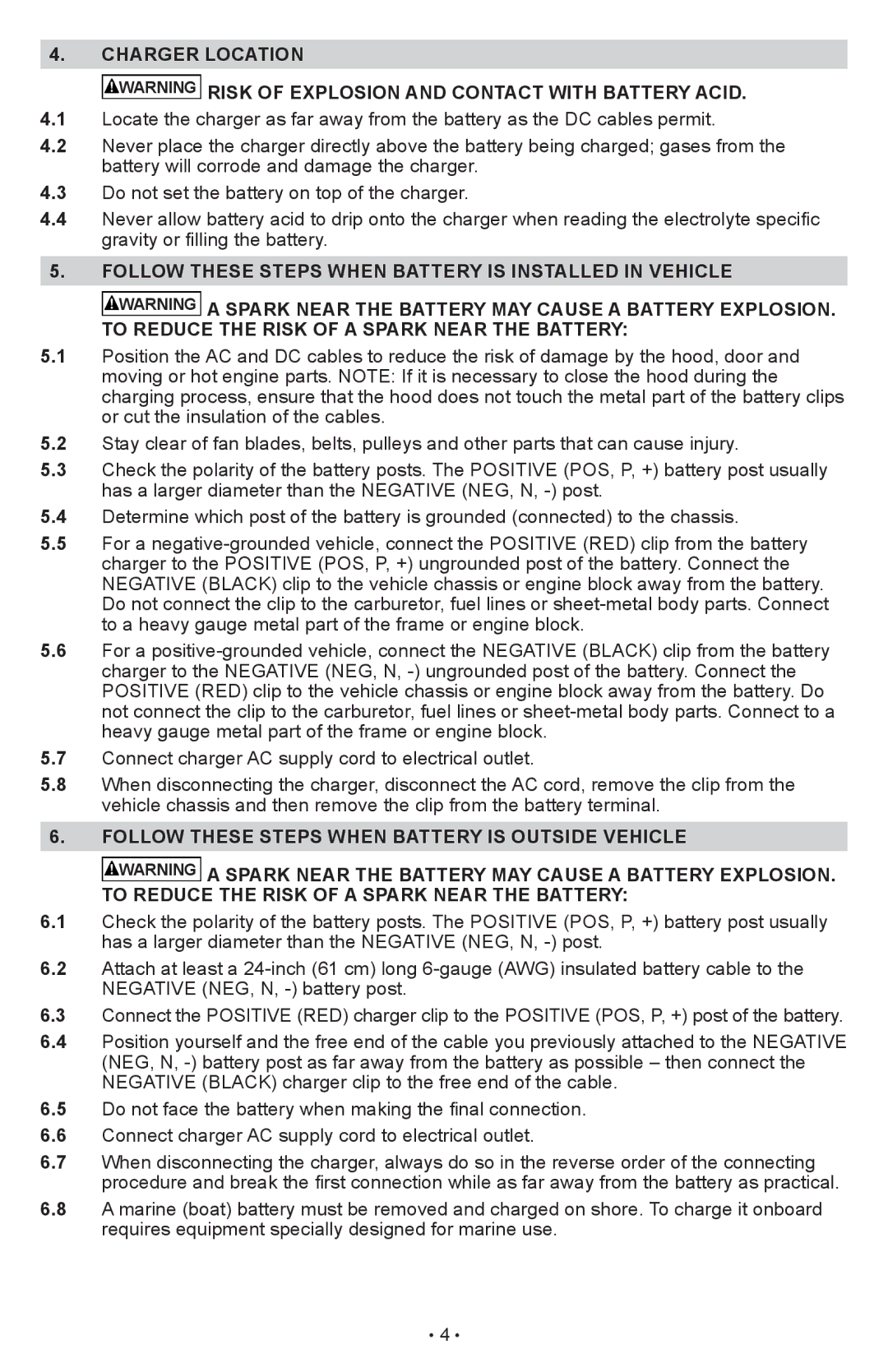
4.CHARGER LOCATION
WARNING RISK OF EXPLOSION AND CONTACT WITH BATTERY ACID.
4.1Locate the charger as far away from the battery as the DC cables permit.
4.2Never place the charger directly above the battery being charged; gases from the battery will corrode and damage the charger.
4.3Do not set the battery on top of the charger.
4.4Never allow battery acid to drip onto the charger when reading the electrolyte specific gravity or filling the battery.
5.FOLLOW THESE STEPS WHEN BATTERY IS INSTALLED IN VEHICLE
WARNING A SPARK NEAR THE BATTERY MAY CAUSE A BATTERY EXPLOSION. TO REDUCE THE RISK OF A SPARK NEAR THE BATTERY:
5.1Position the AC and DC cables to reduce the risk of damage by the hood, door and moving or hot engine parts. NOTE: If it is necessary to close the hood during the charging process, ensure that the hood does not touch the metal part of the battery clips or cut the insulation of the cables.
5.2Stay clear of fan blades, belts, pulleys and other parts that can cause injury.
5.3Check the polarity of the battery posts. The POSITIVE (POS, P, +) battery post usually has a larger diameter than the NEGATIVE (NEG, N,
5.4Determine which post of the battery is grounded (connected) to the chassis.
5.5For a
5.6For a
5.7Connect charger AC supply cord to electrical outlet.
5.8When disconnecting the charger, disconnect the AC cord, remove the clip from the vehicle chassis and then remove the clip from the battery terminal.
6.FOLLOW THESE STEPS WHEN BATTERY IS OUTSIDE VEHICLE
WARNING A SPARK NEAR THE BATTERY MAY CAUSE A BATTERY EXPLOSION. TO REDUCE THE RISK OF A SPARK NEAR THE BATTERY:
6.1Check the polarity of the battery posts. The POSITIVE (POS, P, +) battery post usually has a larger diameter than the NEGATIVE (NEG, N,
6.2Attach at least a
6.3Connect the POSITIVE (RED) charger clip to the POSITIVE (POS, P, +) post of the battery.
6.4Position yourself and the free end of the cable you previously attached to the NEGATIVE (NEG, N,
6.5Do not face the battery when making the final connection.
6.6Connect charger AC supply cord to electrical outlet.
6.7When disconnecting the charger, always do so in the reverse order of the connecting procedure and break the first connection while as far away from the battery as practical.
6.8A marine (boat) battery must be removed and charged on shore. To charge it onboard requires equipment specially designed for marine use.
• 4 •
